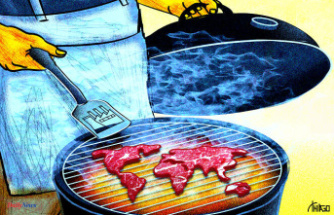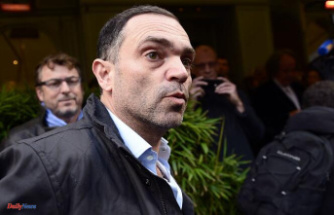Coal, nuclear power, liquid gas - Europeans are currently trying to get everything that is used for heating and electricity generation. Carbon dioxide emissions are of secondary importance at most. But the ecological energy transition must and will continue.
The exit from the coal phase-out is not a problem for the traffic light in Berlin. Rather, the low levels of the Rhine and Co. are currently causing concern because, given the low water level, hardly any coal can be transported on the rivers. Western Europe is currently suffering from the worst drought in years. The Rhine is only a shadow of earlier days. The same applies to other rivers, if they still carry water at all.
An extension of the running times of the three remaining nuclear power plants - at least in stretched operation, where the power is reduced and thus extended with the old fuel rods - is under discussion. Even the Greens are at least partially open to this. The nuclear reactors in Emsland, Neckarwestheim 2 and Isar 2 should actually be taken off the grid by the end of the year at the latest, but limited continued operation is now at least not improbable. That would have been unthinkable in Germany before Russia invaded neighboring Ukraine. As a reminder, the war began almost exactly half a year ago.
However, what is probably the biggest paradigm shift in German energy policy is gas. Federal Economics Minister Robert Habeck wants to replace Russian pipeline gas with liquefied natural gas (LNG) as quickly as possible. Two floating LNG terminals are to be moored in Wilhelmshafen and Brunsbüttel in order to unload any deliveries, i.e. to unload them. Germany has already secured two corresponding LNG tankers, which have the necessary regasification systems. Two more floating LNG terminals are in the planning stage.
While Europe mainly knows pipeline gas from Russia or Norway, other countries primarily use LNG. This applies above all to the Asian region, where there are almost no pipelines. Japan, China and South Korea account for a good half of global LNG demand. Put simply, the procedure is as follows: natural gas is cooled to more than minus 160 degrees Celsius and thus liquefied in order to drastically reduce its volume. Then it is picked up by special LNG tankers that transport the raw material to the destination ports. The LNG is then heated there, which means that it changes back to a gaseous state and can be fed into the existing pipeline network. It is a process that is extremely energy-intensive overall.
There is a fundamental difference between coal and nuclear power and LNG. The coal and nuclear power plants, including the necessary infrastructure, already exist. They just have to keep going. The infrastructure for the use of liquid gas, on the other hand, must first be rebuilt. Coal and nuclear are therefore short-term measures so that industry in Germany can continue to produce and heat households in the next two winters. LNG is a longer-term strategy. It makes no sense at all to build LNG terminals for a lot of money and connect them to the pipelines, some of which are still to be completed, which also involves considerable effort, and then take the whole thing off the grid again in one and a half to two years.
Pragmatism requires that coal and probably also nuclear power plants be kept running for a limited time. In the medium term, however, renewable energies in particular must continue to be expanded. Only with solar and wind power will Europe become independent of imports of fossil fuels and thus no longer be politically blackmailed.
And only with solar and wind power can Europe make its contribution to limiting global warming to the internationally agreed 1.5 degrees compared to the pre-industrial age. Gas-fired power plants are necessary to ensure base load capability, i.e. that there is energy even at night when there is no wind. At least until there are large energy storage systems that can be operated economically.
The energy transition has to take a break because of the war in Ukraine, whether that fits or not. In two years at the latest, however, it should be possible for Europe to be independent of Russian oil and gas supplies. However, this requires the massive expansion of alternative energy sources in the near future. But it's not just about Europe, and it's not just about the next year or two. Renewable energies and energy efficiency measures are a megatrend.
Investors can rely on this with investments in the Global Challenges Index of the Hanover/Hamburg Stock Exchange. The index includes 50 international companies that support at least one of the 17 Sustainable Development Goals of the United Nations. Goal 7 is affordable and clean energy. Index values such as EDP Renováveis (wind farms), First Solar (photovoltaics), or Nordex (wind turbines), Ormat (geothermal energy) and Orsted (wind farms) contribute to this.
Even if positive returns can now be achieved again with fixed-income investments, the main source of returns remains by far the stock. The equity ratio is always dependent on individual criteria such as the investment horizon or risk-bearing capacity. Finally, due to the global situation on the markets, risk management is becoming increasingly important.
About the author: Mark-Uwe Falkenhain has 30 years of professional experience in advising wealthy private and business clients. After various positions at major German and international banks, he has been a member of the board of Geneon Vermögensmanagement for twelve years.












